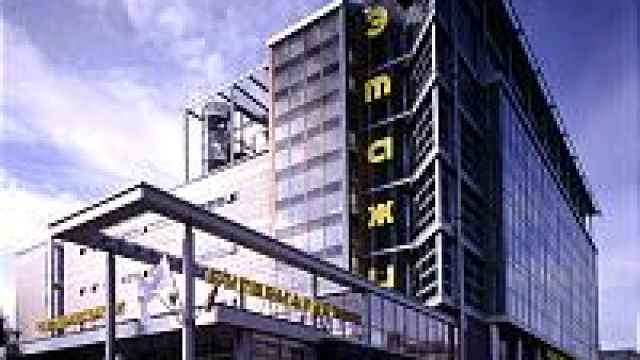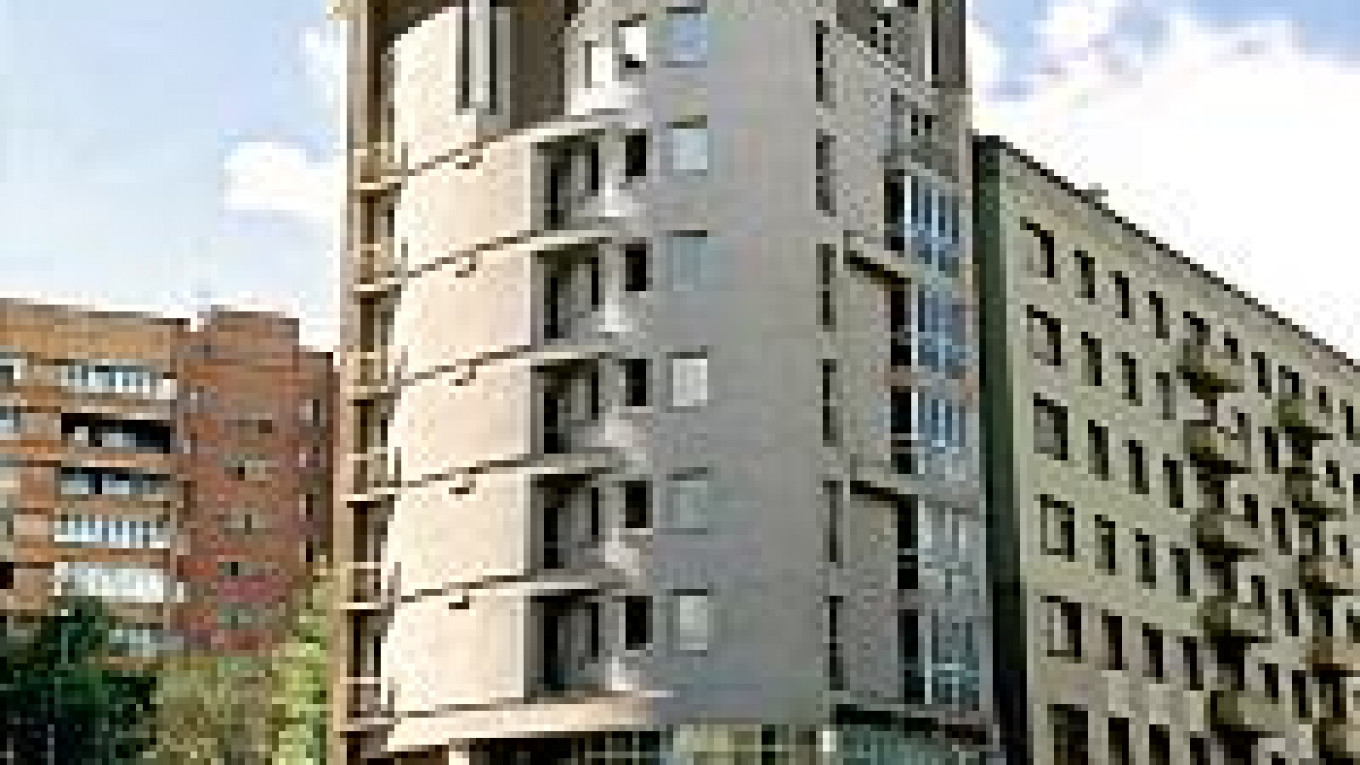But the high-rises have largely been kept out of the central city that extends back from the Kremlin, which overlooks the junction of the Volga and Oka rivers. The architecture of its central pedestrian street, Bolshaya Pokrovskaya, preserves the pre-revolutionary feeling well enough for films to be shot with horses and carriages riding up and down it.
But dotted among the former 19th-century shops, banks and merchants' residences are some modern buildings.
These are the work of the Nizhny Novgorod architecture school, largely small-scale buildings built with local financing on the sites of dilapidated wooden buildings.
Until recently, these architects were producing the best work in Russia, according to Bart Goldhoorn, editor of architecture journal Project Russia, which in 1997 devoted an issue to the school. By that time members of the school had built some 60 new buildings.
He is not alone in thinking so -- Nizhny Novgorod architects and their works have been exhibited and acknowledged beyond Russia's borders, including at London's Royal Institute of Architecture last year.
"They developed a lot of small projects in the center of the city that are postmodernist and very interesting. It's remarkable how much has been built over the last 10 years in the center of the city," Goldhoorn said.
The driving force behind the school was Alexander Kharitonov, who became the city's chief architect in 1992.
He organized the "school" at state design institute Gosgrazhdanproyekt in the 1970s, he said in an interview published by Project Rossia.
"I always participated in competitions and shows, especially before I became chief architect," said Kharitonov, who was named Russia's top architect in 1996. "Together with my colleagues we were more or less a school by the mid-'80s."
By the time he became chief architect, most members of the school had founded architectural studios.
 For MT The Etazhi shopping mall was designed by Viktor Bykov's studio and opened this year. | |
Kharitonov had to operate under market conditions, but insisted on high standards. "People in business try to build shacks and make money as fast as possible," he complained.
The role of architects was to educate these investors: Those who produced classy construction plans were more likely to get approval, he said.
Kharitonov was killed in a car accident in 1999, but his legacy lives on -- carried forward by his professional partner Yevgeny Pestov and other members of the school.
Kharitonov's successor as city planner, Oleg Rybin, said the legacy of the work in the 1990s is still important for the city. Some of the works are masterpieces, while the overall standard of the work of about 16 architects in Nizhny Novgorod is high.
Alexander Shchagin, professor of town planning at the city's Architectural and Construction University, said the city had favored the construction of attractive buildings while city infrastructure was neglected under Kharitonov.
The situation was the reform of the economy, and then-Governor Boris Nemtsov was giving the city a progressive image; architecture was intended to match that.
Viktor Bykov, one of the leading architects of the Nizhny Novgorod school, said Moscow architecture is now surpassing Nizhny Novgorod because the level of investment is higher.
"Here people build using their own money and don't build very much," he said.
While acknowledging the beauty of the city's old buildings, including wooden ones, he said the city has to develop. "But the city will change its face," he said. "If we don't do modern, contemporary buildings in the future they will be asking what we were doing at that time."
Bykov, who participated in the design of four buildings in the city in the 1980s, has built about 40 since and has adapted to working with private investors.
His studio was chosen to build the 16,000-square-meter, $12 million Etazhi shopping center that Roman Vvedensky, BISNIS representative in the Upper Volga region, noted as a new stage in the development of modern shopping malls in the city. The center opened in February and is the first example of a big investment in the city's real estate, said Vvedensky, whose agency is the U.S. government's market information center for U.S. companies exploring business opportunities in Russia.
http://www.bisnis.doc.gov/bisnis/country/0305NNRealEs.htm Overview of Nizhny Novgorod Real Estate Market
http://www.admgor.nnov.ru/english/index.html Nizhny Novgorod Administration
A Message from The Moscow Times:
Dear readers,
We are facing unprecedented challenges. Russia's Prosecutor General's Office has designated The Moscow Times as an "undesirable" organization, criminalizing our work and putting our staff at risk of prosecution. This follows our earlier unjust labeling as a "foreign agent."
These actions are direct attempts to silence independent journalism in Russia. The authorities claim our work "discredits the decisions of the Russian leadership." We see things differently: we strive to provide accurate, unbiased reporting on Russia.
We, the journalists of The Moscow Times, refuse to be silenced. But to continue our work, we need your help.
Your support, no matter how small, makes a world of difference. If you can, please support us monthly starting from just $2. It's quick to set up, and every contribution makes a significant impact.
By supporting The Moscow Times, you're defending open, independent journalism in the face of repression. Thank you for standing with us.
Remind me later.


